

Ever heard this type of conversation? Novel drivers face lack of confidence, making quick decisions while behind the wheel as they are new to the world of driving. So they rather prefer to sit in the back seat or use other modes of transportation.
This state of uncertainty might lead to chronic road accidents in which the individual copassanger as well as the other party could be injured resulting in temporary, permanent disability or even death. But this risk could be prevented provided with the right direction to these audiences.
Thus C.A.N.D.Y.(Capability Assistant for Novice Drivers Yaw) is a smart assistive system to enhance confidence for novice drivers who get conscious and clueless on roads during the initial days of driving.
Context
Covid 19 has affected human life in many ways. Transportation is also one of them. The pandemic led to a type of insecurity among people’s minds while travelling using public transportation. Here are some statistical data
The largest decrease was seen in the modal share of metro services (9 %) followed by buses (4 &), and local trains (1%).
A significant increase in the private modes of travel. The share of private cars and two wheelers increased by about 10%.

People started inclining towards private mode of transportation i.e. 4 wheelers and 2 wheelers.

But what's new in it?
Unlike the previous time, this time the inclination towards 4wheelers was purely driven by the need of the moment not by the want.
This inturn caused a necessity to drive by oneself.

Design process
The process involves the use of Double Diamond methodology to analyse the current scenario and arrive at a solution
Secondary Research
Road accidents

As per the World Health Organization, accident related deaths are known to be the eighth leading cause of death and the first largest cause of death among aged 5-29.

In India alone road accidents kill almost 1.5 lakh people annually. Accordingly, India accounts for almost 11% of the accident related deaths in the World.

Govt. of India recognised human error as one among the 3 major reasons for road accidents
POST COVID-19
13%
decrease in the share of
metro services in
Delhi-NCR.


POST COVID-19
10%
increase in the share of
personal car in
Kolkata.
The decrease in public transport is mainly compensated by an increase in the use of private vehicles.

Owning a personal car is one side, making it run is also equally important; Either learn by oneself or hire someone to drive for you.
Further, this creates a situation where not knowing to drive a vehicle makes a person immobile, Hence making him/her disabled to move when it is necessary.
So what makes practicing driving difficult?
Key findings
Lacking
Studies concluded that driver education and training contributes little to reducing crash risk or involvement for road users
Driver training programmes on vehicle handling skills may actually lead to increased risk taking due to learners’ inflated self confidence and self-rated skills.
Monitoring the capability of what they can do and modifying their learning strategies appropriately; A self assessment.
Reality
Emotions, mood and mental stress may affect driving-related performance in a number of ways, leading to risky and aggressive driving.
The lack of adequate skills is not so much a matter of poor vehicle control, but is more a lack of:
-
being able to observe properly
-
adequately judging traffic situations
-
predicting accurately how a particular traffic situation will develop.

It is also important for a novice driver to understand his capacity; E.g. ‘it is dark and raining, and as I don’t have enough experience yet, I will go by Taxi this evening and not by car’
Primary Research
I conducted primary research to know the actual situation. The research was conducted in local driving schools and was conducted among some users of the age group 18–35 years. It included
-
One who is learning driving
-
Learnt but not practicing
-
Learnt and practicing
-
and the Pros
User Interviews
Observation
while driving
Check listing
Driving school instructors' perspectives
"
I take 2 to 3 theory class on basic road signs and basics of car and proceed
"
"
It is difficult for those who don't know anything about car
"
"
Normally 30 class of 5kms each should be enough to learn to drive.(ONLY LEARN)
"
"
Unable to explain the dynamics of a vehicle
"
"
No feedback system for tutor
"
"
No validation for learner that how much he/she learnt
"
User observation
With the permission of the driving school, I affixed a camera on the dashboard and sat diagonal to the learner while he is driving so that I can observe him/her closely.




Smart band experiment
Further I requested the participants to wear a smart-band so that I can measure the approximate driving stress.
I was able to find out that Learners tend to make more mistakes under stress. Also while under stress giving them more input intern increase the stress level.

A checklist was developed based on the observation while a learner is driving the car. The updated version later compared with the existing driver evaluation checklist form to validate the credibility

Initial handwritten checklist

Improvised checklist
Interviews

Darshan U M
24 years, MSc in Physics
"Learning to drive was always a dream for me since childhood. Now I can drive confidently and don't require help unless I get stuck in a parking lot or sometimes changing the lane. Then I get panic and won't dare touch the car for a week."

Mrs. Vidya
29years, software engi
"I decided to learn driving as I thought public transport wouldn't be safe considering the present covid and social situations. Now I have the hold of ABC and steering. The problem is I can observe surrounding but I'm not able to act accordingly. There should be some help during such a situation."

Shraddha K
26 years, Project Management consultant
"The biggest barrier for me while driving was my inner fear itself rather than any external factors. The stress while driving also leads to fluctuating pressure on A-B-C. I can’t deny the fact that driving school did help me; however, it is always the standard one. I couldn't get personalised instructions."
Opinions
"
I get distracted when I see vehicles.
"
- Kishore
(learning and practicing )
"
I need somebody to guide me at least for a month of my initial driving days
"
- Padma
(learnt but not practicing)
"
Some assistance system should be there to tell you how much to turn the steering
"
- Akash
( learning )
"
It is required to understand vehicle to gain the confidence
"
- Manvith
(9+ years driving experience )
Finalising the parameters
The parameters were first divided into 3 main phases to emphasise on the actual problem. Further filtration was done based on the relevance and learners tendency to not do the mistake


Finalised challenges to intervene

Periphery judgement

Anxiety while driving

Assisting while taking turn

Avoid distraction

Keeping the user in learning zone

Extend the vision

Decent vehicle knowledge
Persona
A user persona was developed to depict the key insights attained from user research and analysis.
Vishal David
Age : 29 years
Occupation : Software engineer
Location : Mysore
Vishal David is an Engineer from a small village of Coastal Karnataka. Despite his family problem and poverty, managed to score good grades in engineering and got a decent job at Mysore. Now having financial stability and hoping for a better life, Vishal is fulfilling all his childhood dreams; driving his own car is one of them. Now he has learned the car with the help of the driving school.
About
-
Recently learnt to drive a car and has bought a new car.
-
He is man with Go getter attitude, always aim at single attempt
-
Quick learner
-
Tech savvy.
Hope
-
A faster way to adapt to system of a vehicle.
-
To have assistance only when it is necessary .
-
A trick to handle the stress while driving.
-
System to know the progress in the driving.

Pain-points
-
As he is new to driving, can not judge the peripheries of the car
-
Makes mistakes and gets stressed.
-
Don't know how much to steer.
-
No proper knowledge to park the vehicle.
-
Don't know how to make a U-turn.
-
Cannot judge the distance between a moving vehicle.
Opportunities
-
A system that will help only when the user needs it.
-
Stress management when there is a need.
-
Closed community of novice drivers
-
A platform to keep the user in the learning zone.
-
An analysis / self help tool.
Scenario







Design Brief
To design an assistive system for novice drivers to enhance their confidence while driving
What?
A multimodal assistive system for novice drivers while they drive .
How?
How?
By aiding aiding the capabilities i.e motor, sensory and cognitive
Why?
To enhance their confidence thus reducing dependence on other individuals
Ideation
I tried to ideate a device inside the car. To introduce a new device to the ecosystem of cars it was necessary to study the ergonomics of the car.

Phase 1 ideation : Preliminary
In the initial phase of ideation, Sensor based tracking and Feedback system were given more importance as it would mostly solve the stated issues.

The steering wheel consisting of an EDA(electrodermal activity)sensor and Stress sensor will provide feedback on over and understeering through haptics and vibration
Visual feedback based on realtime data from the sensors projected through Heads Up Display Unit (HUD)
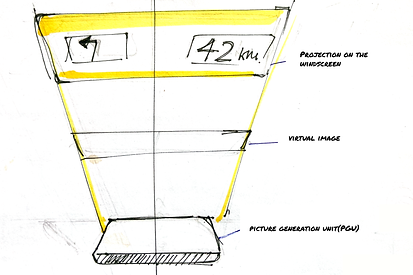


Highlighting the signboards using AR thus giving visual feedback

Visual indication showing the vehicle ahead of the user's vehicle.

Hardware iterations


Screens layout iterations
Phase 2 ideation : Scenario driven
Dynamic trajectory system for peripheral vehicle approximation.
Visual assistance to the user to extend his rear viewing skill.


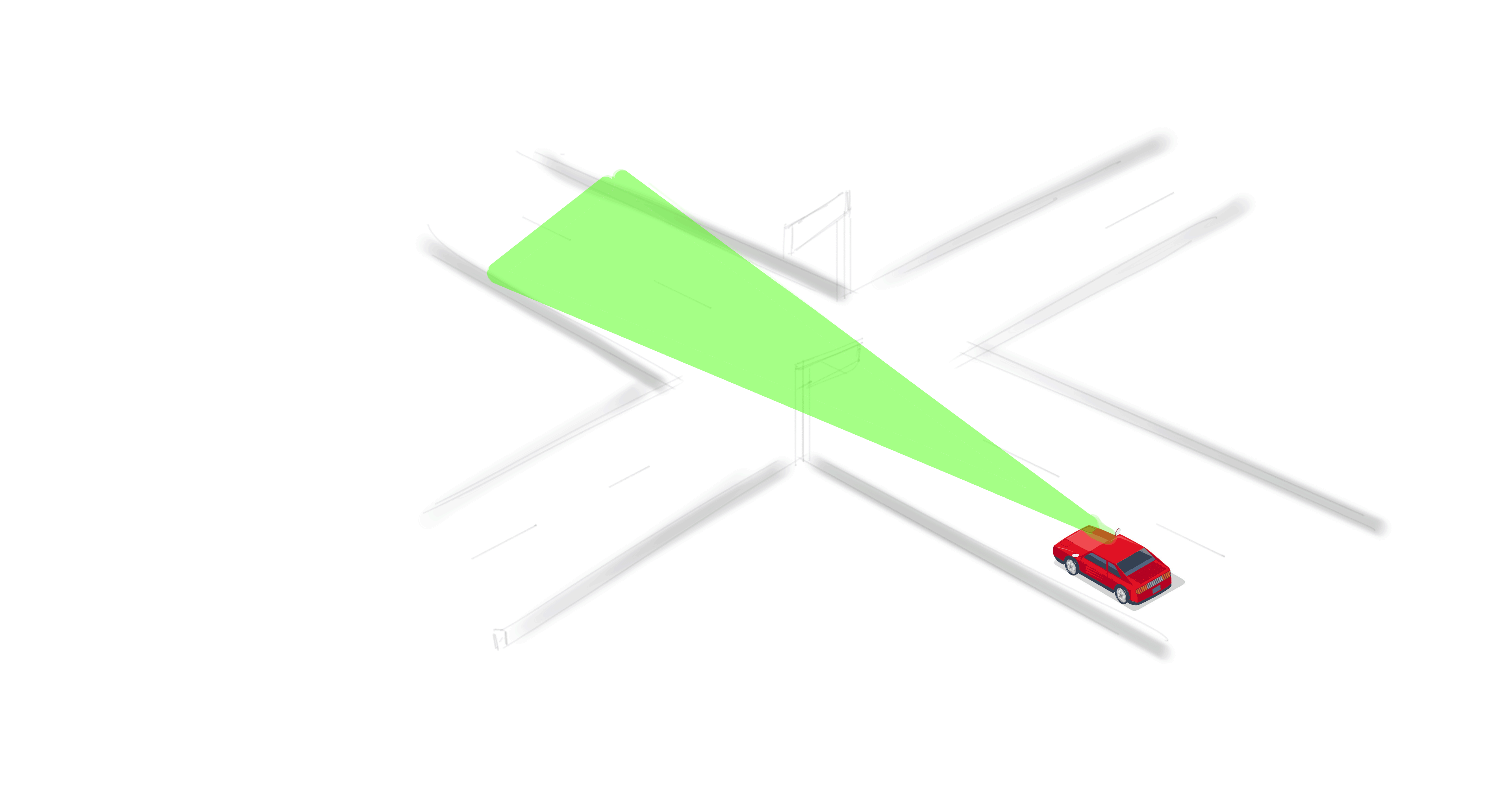
Visual assistance to extend the vison while far forwarding

Phase 3 : Combine

Picked concepts from the previous ideation are developed and consolidated to form a multimodal assistive system. The system uses connected car technology to communicate bidirectionally allowing cars to receive and share data with other cars and other available IoT devices. The finalised concept consists of
-
Hardware. (HUD unit and Responsive steering wheel upholstery)
-
User Interface
-
Smartphone application

AR-powered User interface on the windshield through a HUD unit

An intuitive user interface for minimal obtrusion while driving
A smartphone app to control the system and keep the user in the learning zone

Final Concept
Identity design
C.A.N.D.Y. is a multimodal assistive system for novice drivers to enhance their confidence and driving skills both on and off the road.
C.A.N.D.Y. stands for Capability Assistant for Novice Drivers Yaw, where "yaw" is a term used in aviation symbolically used to signify the ability gained by the user after utilising the product. Also Candy, a type of sweet signifies as self rewarding for user's achievement.
Logo is developed using the combination of a Candy and a Gear lever enclosed in a circle indicating proper use of control leading to an instant result.


Head Up Display Unit
A dedicated head-up display unit to project the real-time visual feedback to the user. The unit further consists of configurable buttons which can be set according to the user's need.
In addition, the unit is equipped with a smartphone docking space, thus strategically avoiding the usage of phones while driving.
Click and move the cursor to turn the device
Smartphone docking system



User Interface
The user interface of the HUD unit will provide basic information such as vehicle speed, time, and simple turn-by-turn navigation along with primary visual instructions.

Splash-screen
Introducing the interface to the user followed by the home screen
Scenario 1
Interface assisting the user to take a U-turn via a virtual stepwise illustration along with the distance.
Scenario 2
Interface identifying the vehicle ahead of user's vehicle and showing the safe distance
Scenario 3
Assisting the user to extend his peri foveal vision by showing which RVM to glance.
Scenario 4 - Medium Stress
System identifying user's stress level and suggesting him to lessen the stress through a simple breathing exercise
Scenario 5- High stress
System identifying user's high-stress level and insisting him to stop the vehicle and start once stress level becomes normal.
Video prototype
An video prototype to visualise the working of peripheral judgement assistance while driving

Smartphone App
The smartphone app is designed to have overall control over the complete system as well as the learning. Features of the app are aimed at retaining the user to be in the learning environment.
Wireframes
Onboarding

Splash screen

New user sign in

Creating profile

Existing user sign in

sign in via OTP
App features

Home Screen

Analysis dashboard

Tips primary screen

Feed screen

managing friends list

UI Elements
App features
The user can access the current level of his learning, active assistive features, and analytics of his driving from the home screen.

Achievements and Active assistive features

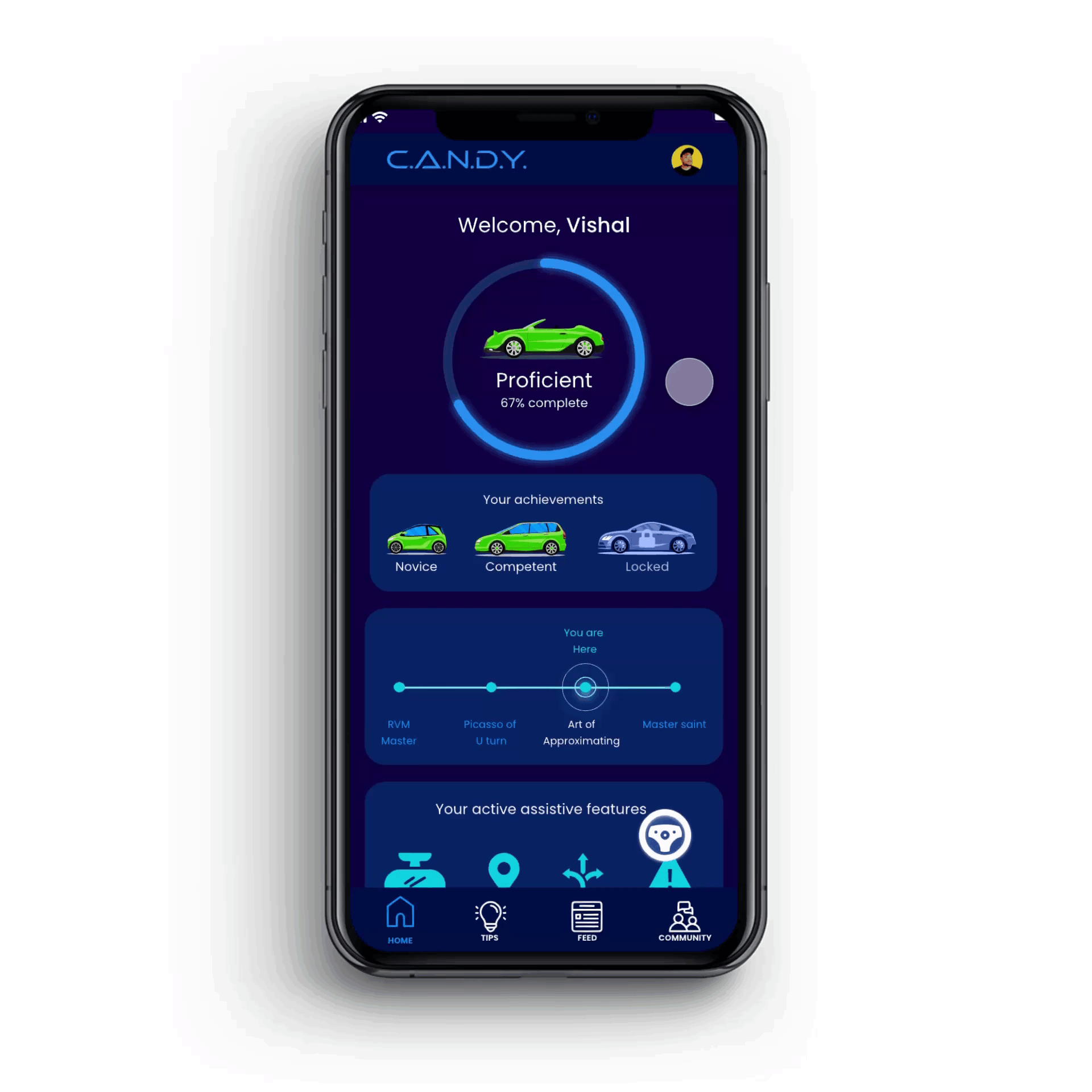
Menu
Drive now, driver analytics and skills learnt
By pressing the Drive now button, the user will be able to enter the driving mode, thus giving access to the location tracking and to activate DND.



Screen displaying Time and distance driven
Activate the mode
General instructions before proceeding
Through the home page, the user can view the analysis to know his driving time, driving stress level, and Hard brake and acceleration. Furthermore, he can view activity day, week and month-wise
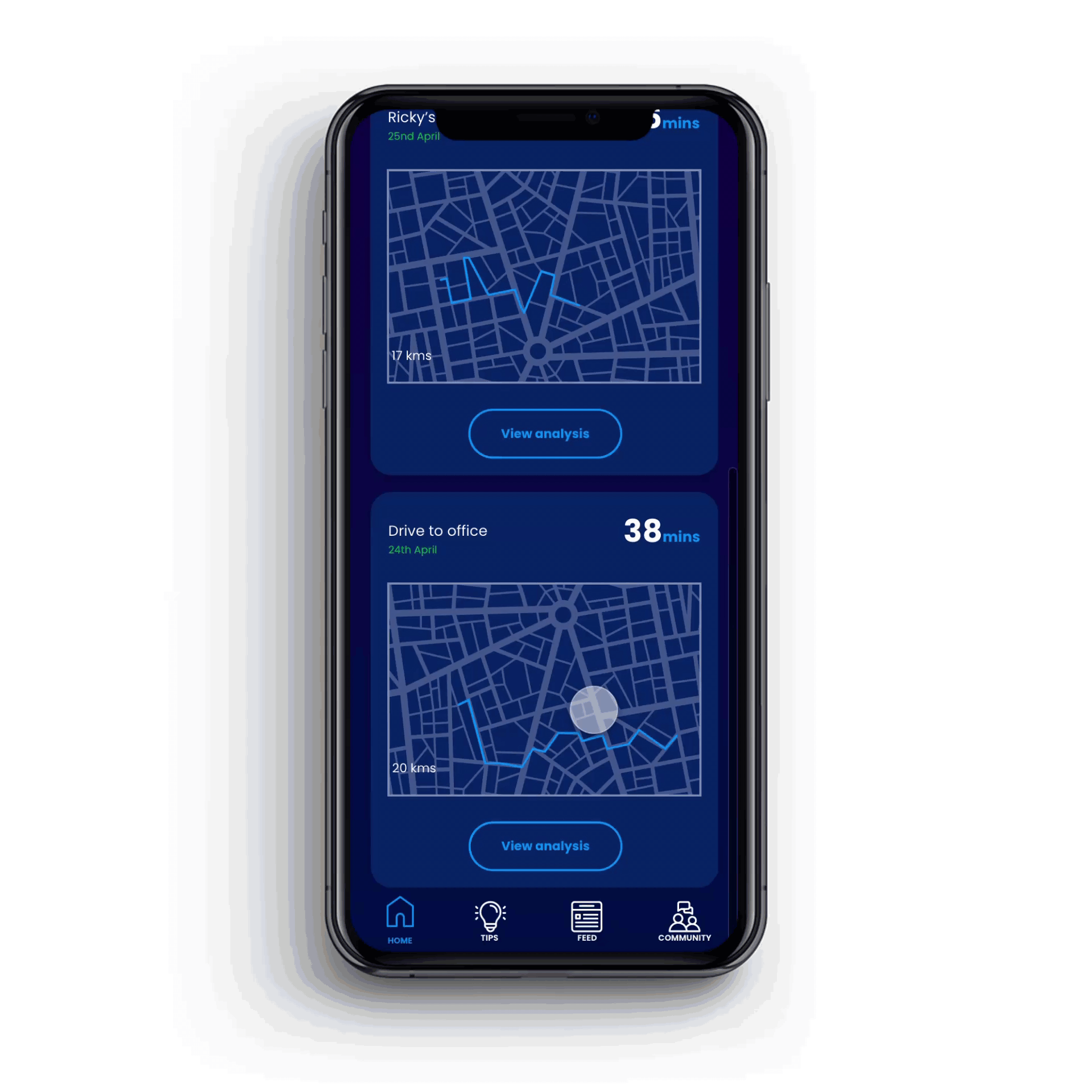



Hard brake & acceleration
Driving time & Stress
Activities
Walk-around
Customized driving tips from CANDY will be available on the tips tab. The user additionally can access the general tips and make use of them.

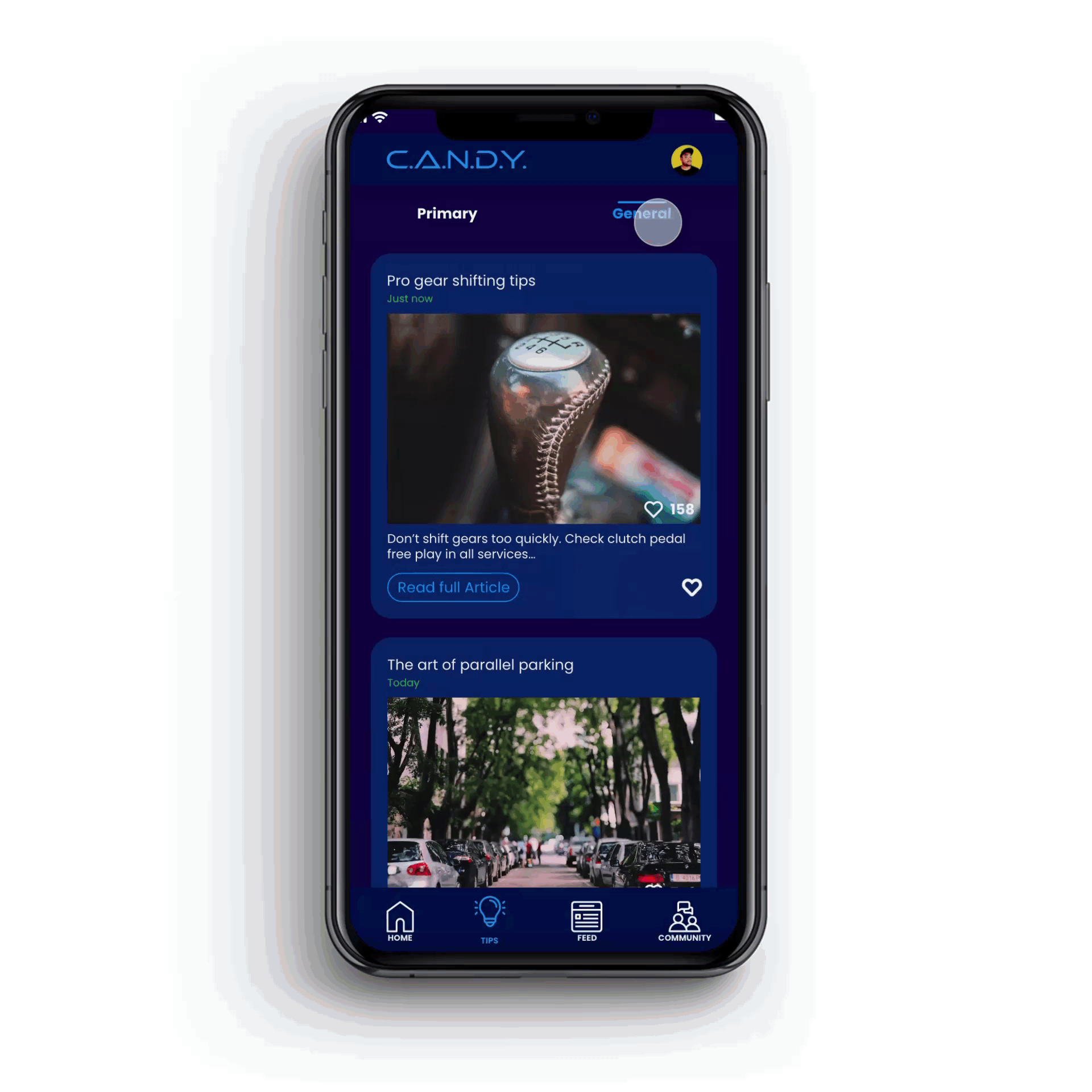

Walk-around
Personalised tips
General pointers
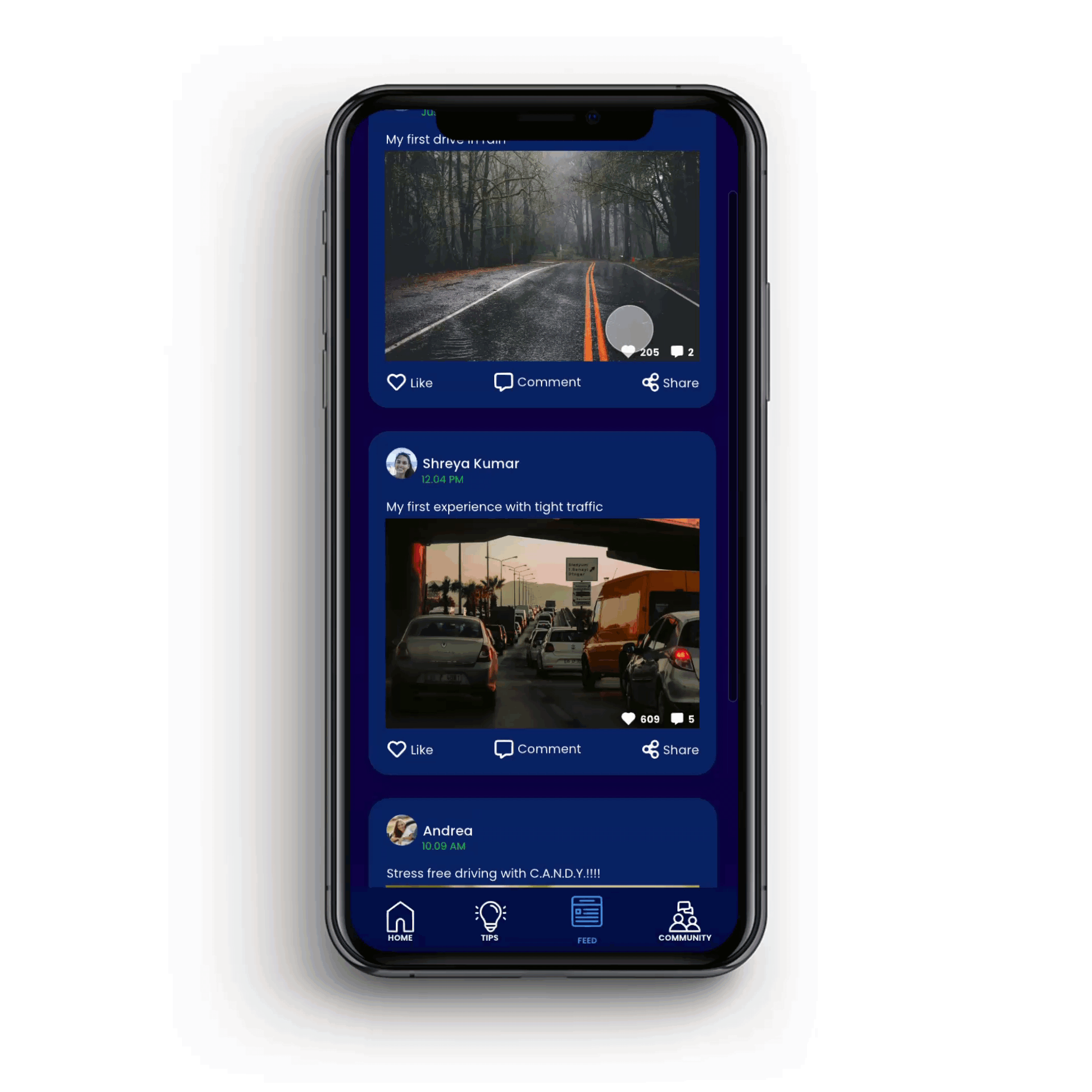
Feed is the platform where different users can share their experiences. Here users can like, comment, and share their adventures.
Feed is the platform where different users can share their experiences. Here users can like, comment, and share their adventures.
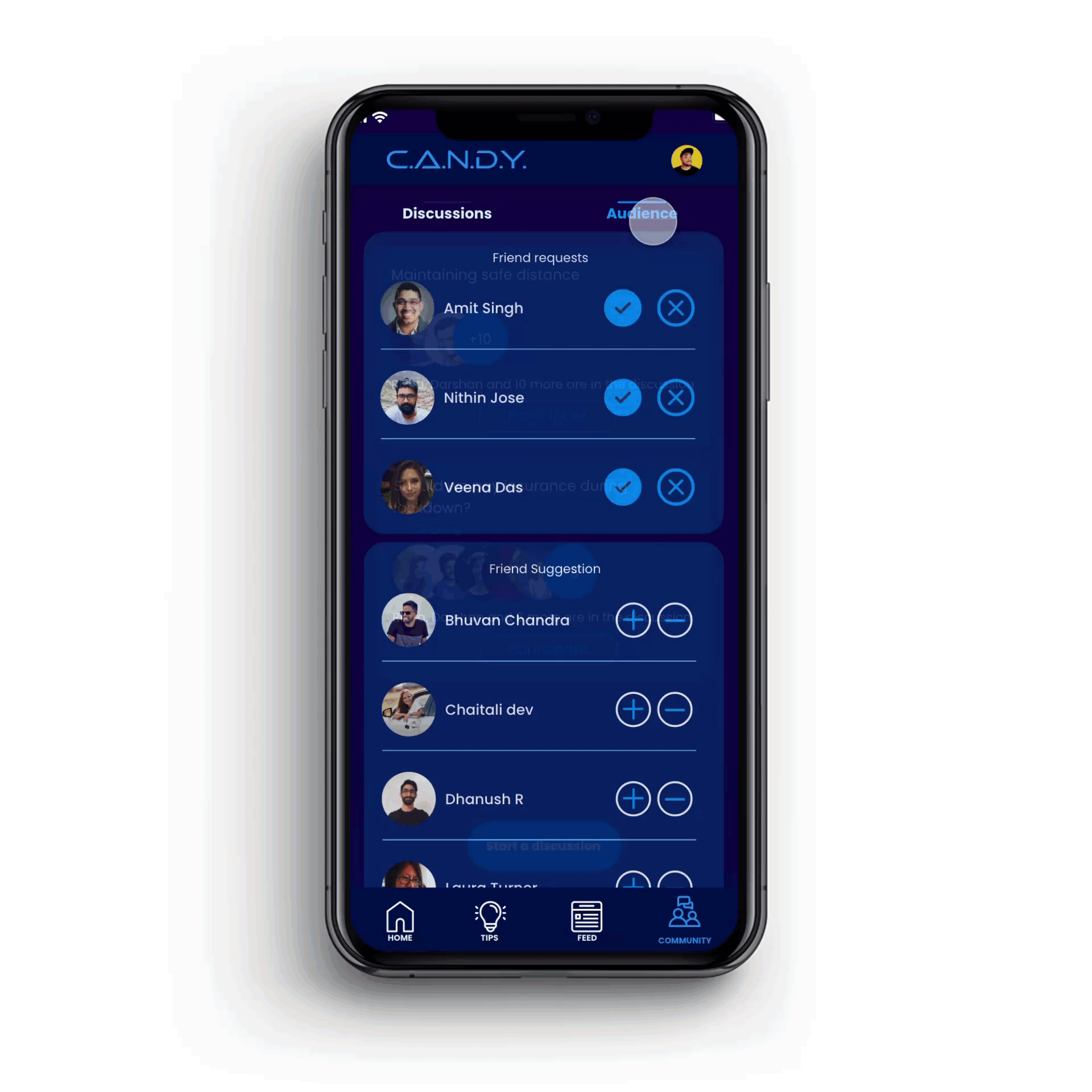


Start discussion and ongoing discussions
Accept and find new friends
Walk-around

Okay. Now I learnt to drive. What next?
Once the user is confident enough, the feature will also evolve accordingly. The whole system will turn into a vehicle maintenance companion thus a turn the user into a tactical driver

But how?

HUD will display Navigation, Incoming calls along with the other real time information

Smart phone will update into car maintenance and statistical platform.

Good driving habits
Compulsory implementation of the system will create better awareness of good driving habits resulting in reduced traffic.

Old-age community
This could be a boon to older audiences since their driving performance may decline with age.

Reduced road accidents
Safe driving habits and assistive technology will drastically reduce road accidents, if not at least will lower fatality.
Project by
Manvith U S
Under the guidance of
Mr. Ashok Mondal, Mr. Nikhil Das
References
-
Automotive ergonomics : driver-vehicle interaction / edited by Nikolaos Gkikas
-
Driver behaviour and Training / edited by Lisa Dorn
-
The handbook of human-machine interaction : a human-centered design approach / edited by Guy A. Boy
-
H-point : the fundamentals of car design & packaging / Stuart Macey and Geoff Wardle
-
https://www.teriin.org/sites/default/files/2020-05/behavioural-effects-covid19_0.pdf
-
https://info.rastrac.com/blog/monitor-hard-braking-and-acceleration

